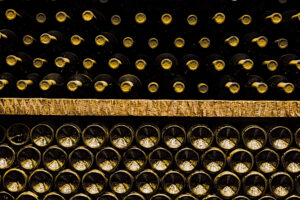
From Ningxia to Xinjiang, from Shandong to Hebei, from Gansu to Yunnan, from Shanxi to Sichuan, from Shaanxi to Tibet: China of quality wine shows its best products, the most promising and suitable territories, where real wine jewels are born, told by Lan Liu, a Chinese journalist who lined up 50, the best in the country, from 28 wineries, collected in the first edition of the “Slow Wine China” guide, presented just yesterday in the “Slow Wine Fair” (today last day, ed) by BolognaFiere and Slow Food. “This guide should be considered as an introduction to Chinese wine, with producers who do not limit themselves to producing exceptional wines, but do so by interpreting the true Slow Food philosophy in the best possible way”, explains Lan Liu. “It is a selection that is not simply based on the sensory qualities of wine, for which excellent publications already exist, but which aims to highlight the indissoluble link between wine and its place of origin, local culture and society”.
The result is a “bridge” between Italy and China capable of bringing two different cultures together through the common language of wine. Which, through varieties such as Cabernet Gernischt, shortens the distance that seems infinite, intertwining the history of Chinese viticulture, which took its first steps at the end of the nineteenth century, with the millennial one of Europe, aiming to do, “after quantity, quality, a necessary step to let consumers know what lies behind a wine. There is a lot of work to do, because viticulture in China actually took hold in the 1970s and 1980s it will take time. We just think that many companies in Italy are only now experiencing the transition to the second generation”, says to WineNews Lan Liu.
“There are so many places to discover, but Ningxia, Xinjiang, Shandong and Hebei right now are the territories that give us the best perspectives and wines. It should also be said that, with all this climatic unpredictability, there are many areas that can offer a future for wine, especially in Southern China. It is impossible, however, to make comparisons with Italian territories such as Tuscany and Piedmont, where the history of wine is almost a thousand years old. In the future, however, there will certainly be the possibility of breeding vines other than internationals with interesting results: a lot depends on the open-mindedness of producers and consumers, but I am convinced that there will be room, for example, for Italian varieties”, says Lan Liu (in the next few days also video on WineNews).<(B>
“This is another important step in our goal of promoting wines from all over the world, which share the Slow Food values of good, clean and fair, three simple adjectives that perfectly capture the concept of quality. Because they are not only good, but they are produced respecting the environment and the people who produce them, but also the landscapes, cultures and traditions of their places of origin. China is a country that we are sure will provide many viticultural surprises in the future”, comments Giancarlo Gariglio, Slow Wine Coalition International Coordinator.
Copyright © 2000/2026
Contatti: info@winenews.it
Seguici anche su Twitter: @WineNewsIt
Seguici anche su Facebook: @winenewsit
Questo articolo è tratto dall'archivio di WineNews - Tutti i diritti riservati - Copyright © 2000/2026